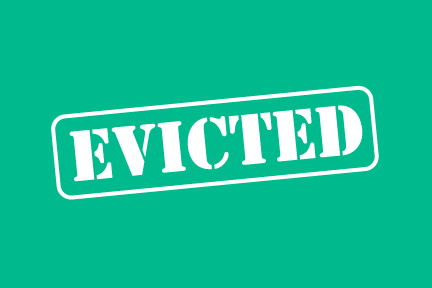What is the Process for Evicting a Tenant?

A landlord/tenant relationship can become contentious for several reasons. The primary one being non-payment of rent. Other common reasons include disturbances of the peace (loud music, rowdy parties), or illicit/criminal behavior committed by the tenant. In many cases, these issues can be resolved amicably or at least without legal proceedings. When that is not possible, a landlord should understand the proper means to evict a tenant.
Documentation
Documentation is key. Not having sufficient evidence to support the reasons for eviction is the key mistake made by many landlords. It is best to keep a running file that documents any violations committed by the tenant. For instance if the tenant is consistently late with the rent, the landlord should keep bank statements/cancelled checks that reflect when the tenant actually paid. The landlord should also send and keep copies of correspondence sent to the tenant after any late payments. If the issue is disturbance of the peace or illicit behavior, the landlord should document any and all occurrences witnessed first-hand or reported by neighbors or other tenants.
Legal Processes
Notice to Quit: Depending on the nature of the violation, generally it is in all parties’ best interest to try to resolve the issue amicably. This starts with the landlord informing the tenant of the violations and allowing the tenant an opportunity to remedy the situation. If the issue is not resolved, then the next step would be to formally issue a “Notice to Quit.” The Notice to Quit officially informs the tenant that he or she has a certain amount of days to vacate the premises before the landlord will start the eviction process. Each state and local jurisdiction will vary regarding how far in advance the landlord must serve the notice prior to eviction. However, serving the Notice to Quit is the essential first step that a landlord must take in order to initiate legal proceedings.
Eviction Process/Legal Proceedings: If the tenant does not vacate the premises after the specified period has passed identified in the Notice to Quit, then the landlord can start the eviction process. The landlord must file a complaint with the local court, and the tenant must be served with the complaint. The tenant can, but is not required to, answer the complaint and contest the eviction. If the tenant answers the complaint or contests the eviction, then the next step is a hearing or trial in landlord-tenant or small claims court (depending on the jurisdiction). At the hearing or trial, the landlord and the tenant have the opportunity to present all evidence regarding the eviction. The judge evaluates the evidence, and determines if the eviction is valid and appropriate. If the judge determines that eviction is valid and appropriate, the landlord wins the case; if not, the tenant wins the case.
Post-Trial: If, after the landlord obtains a valid judgement of eviction, the tenant does not vacate the premises, the landlord can contact local law enforcement to physically evict the tenant. A landlord cannot and should not “self-help,” and attempt to physically remove the tenant . It is in the best interest of the landlord to conduct matters within the proper parameters of law so that he or she is not counter-sued by the tenant.
Remember eviction laws vary by state. If you are having an issue with a tenant, post a short summary of your legal needs at www.legalserviceslink.com, and let the perfect attorney come to you!
Do You Need An Attorney?
If so, post a short summary of your legal needs to our site and let attorneys submit applications to fulfill those needs. No time wasted, no hassle, no confusion, no cost.

